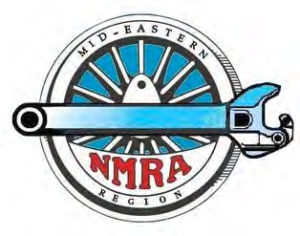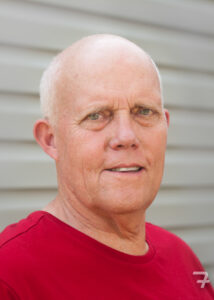Minutes submitted by Clerk Harvey Heyser
Division members met remotely on the internet using the Zoom platform. The Superintendent convened the meeting one hour prior to the published start time to allow for any attendees having trouble with the Zoom connection time to try logging in multiple times. After some socializing, Superintendent Jerry Skeim called the business meeting to order shortly after the 2 pm start time.
20.10-1 Paymaster’s Report: Paymaster Ray Price reported that the Division has $3808.09 in its bank account, the same amount as in last month’s report.
20.10-2 Clerk’s Report (Meeting Minutes): Because of computer problems (letting the smoke out), Clerk Harvey Heyser was unable to access his copy of the draft minutes. Paymaster Price read the draft minutes for the September meeting (previously distributed by e-mail). Ron Polimeni made the following motion (second by Alex Polimeni):
Motion: That the draft Minutes for the September 2020 meeting be approved as submitted. The motion passed unanimously.
There was general agreement among those present that the SMD dispense with reading of the draft minutes in future.
Old Business: None brought up.
New Business:
20.10-3 Remote meetings: Superintendent Skeim notified attendees that remote meetings on the internet using the Zoom platform will continue for the foreseeable future. Meeting dates will continue to be the 2nd Sunday of the month. Members expressed appreciation for a first reminder 2 weeks before and a second the Friday before the scheduled meeting. Editor Tom Fedor will post the dates on the SMD blog, and Alex Polimeni will post on Facebook.
20.10-4 2021 Mini-Con: In response to a question about delaying the date of the event because of pandemic concerns, Chair Pete Clarke made the following points:
- He indicated he had been in contact with Brian Wolfe on Mainline Hobbies.
- He asked attendees if they would give in-person clinics in a crowded hall if the situation in the spring is what it is presently. The response was generally negative.
- He pointed out that trying to set up a spring 2020 event was likely wasted effort considering what we don’t know at this time. He expressed his opinion that effort will be best spent keeping the SMD strong and functioning at this trying time. (Helping Mainline Hobbies, creating content for the Wheel Report, and posting remote clinics (show and tell like the informal Mini-Con ones) on the SMD blog/Facebook pages were suggested.)
- Holding the Mini-Con outdoors was suggested but was not favored because of unpredictable weather, the difficulty of providing for power needs, and inability to hear presentations.
- Summer 2021 was suggested. Chair Clarke indicated a willingness to consider that possibility if the current situation improves greatly and quickly. A possible summer 2020 flea-market (not at Blue Ridge Summit) was also briefly discussed.
- Chair Clarke will begin planning for the 2022 Mini-Con in March/April of 2021. He reminded all of the importance of Mainline’s mailing list for getting the word out.
20.10-5 Strengthening the SMD: Members pointed out that a stronger internet presence now will help the SMD face the electronic future. Several members reported on their positive experiences with virtual NMRA events (NMRAx).
20.10-6 Virtual Mini-Con: In light of NMRA virtual events, a virtual Mini-Con was suggested and discussed. Recorded clinics could be compiled for internet viewing. Chair Clarke reminded everyone that the in-person interaction is one of the most important qualities of SMD’s Mini-Cons.
20.10-7 Virtual Raffle: Members suggested holding a virtual raffle to support Mainline Hobbies. Paymaster Price volunteered to handle the financial aspects of the raffle including a PayPal account. No decision was made.
20.10-8 Brochure: Bob Johnson reported the brochures have not been distributed and volunteered to do so (with a brief inserted notice of the upcoming remote meetings).
20.10-9 Remote Clinics – Equipment, Resources, etc.: A desire to have more than just looking at each other’s faces was brought up. Remote clinics and layout visits were suggested. Attendees mentioned interest in more sharing of what we are doing. In answer to a question, Alex Polimeni discussed recourses available to members for making remote presentations, including speaking to the camera and the screen-share function of Zoom (button at the bottom of the Zoom screen). Following adjournment, Dave Thalman made a presentation demonstrating some possibilities. He reported using his i-phone both walking around and mounted on a phone tripod (available on-line for $15 to $20).
20.10-10 What other groups are doing: Attendees reported on virtual clinics and events held by other groups (both NMRA affiliated and not) and of how those interactions have aided in dealing with the isolation brought on by the pandemic.
Adjournment: The Superintendent accepted a motion to adjourn. The next meeting will be held remotely in November. Members will be notified by e-mail.
Following the meeting, Dave Thalman made a presentation including a video of recent progress on his layout and a discussion of his efforts to complete background scenery. He reminded everyone of the potential for damage to fragile foreground structures as a result of trying to reach over and around them into the more distant areas of a layout. That fact encouraged him to do scenic work this summer.
Dave also discussed his signaling plans using sensors (to change the lights to red when a train passes) and timers (to reset them to green after a given time interval). That approach will greatly simplify signaling his 4-track mainline.


 Your Wheel Report needs photographs of current model railroad projects in progress or completed in this calendar year, 2020. Big or small; email a photograph and short description to Tom Fedor at
Your Wheel Report needs photographs of current model railroad projects in progress or completed in this calendar year, 2020. Big or small; email a photograph and short description to Tom Fedor at  Read more in the
Read more in the  THE 2021 NMRA MID-EASTERN REGION MODEL RAILROAD CONVENTION
THE 2021 NMRA MID-EASTERN REGION MODEL RAILROAD CONVENTION